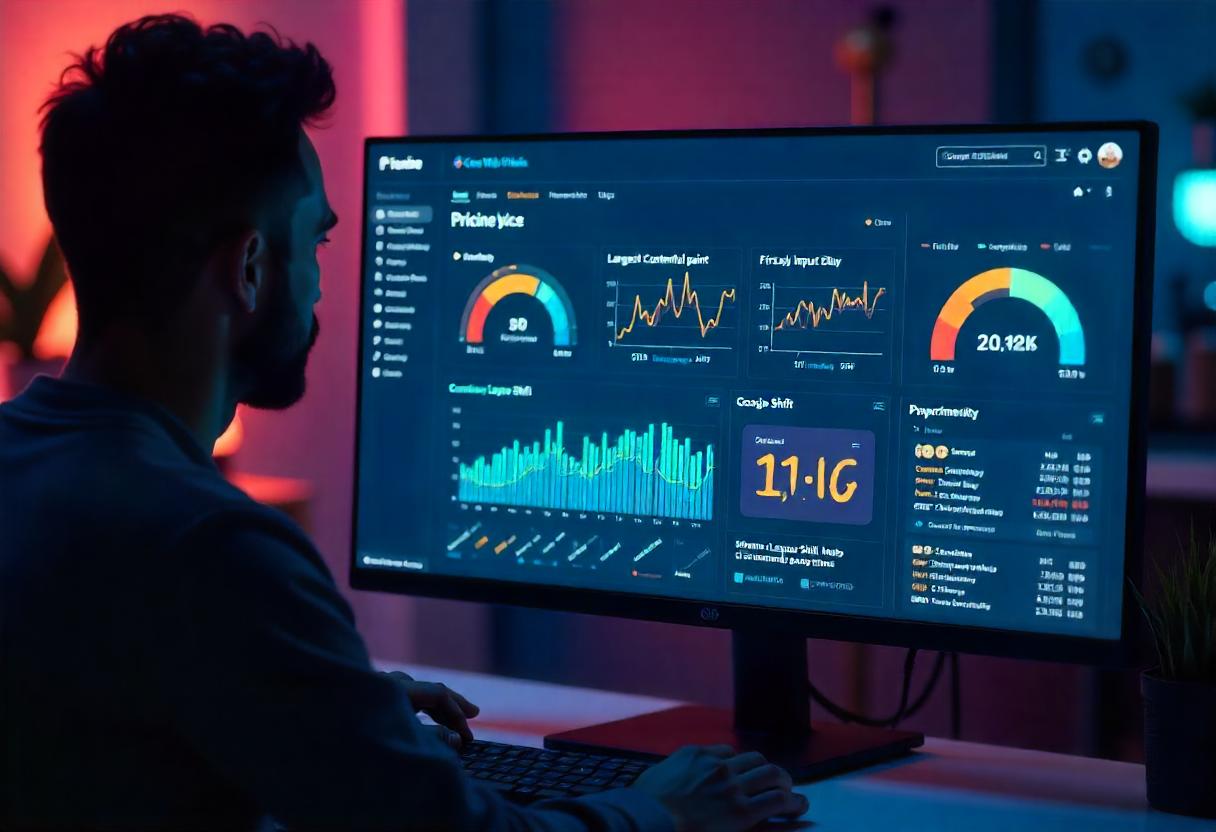Now more than ever, performance of websites is a significant issue in the digital world. Google keeps updating its algorithm constantly, and in this respect, it has turned the tables with Core Web Vitals as the major deciding factor for how well the user experience of a website has been met in terms of speed, responsiveness, and visual stability. Let’s dive into the details of how to use Core Web Vitals to make your website better for performance and rank on a search results page for the rest of this article.
What are Core Web Vitals?
Core Web Vitals is the collection of the core elements Google uses to measure the overall quality of a webpage experience based on the users’ experience. The following are the three parameters covered by Core Web Vitals.
- Largest Contentful Paint (LCP): Measures the loading performance. A good LCP score is 2.5 seconds or less.
- First Input Delay (FID): Measures interactivity. A good FID score is 100 milliseconds or less.
- Cumulative Layout Shift (CLS): Measures visual stability. A good CLS score is 0.1 or less.
These metrics are not only very important for your users but also for the effective performance of your website in regards to SEO. Let’s see how you can get the maximum benefits of Core Web Vitals for your SEO strategy.
Improvement Strategies of Core Web Vitals
1. Largest Contentful Paint (LCP)
To improve your LCP score, focus on enhancements related to page loading improvements:
- Image optimization: Use correct formats, such as WebP and compress images to the point where they are small, but of the highest quality possible. Use lazy loading for images that are out of the viewport.
- Reducing JavaScript and CSS: The blocking JavaScript and CSS shall be reduced. The file minification shall take place, and only scripts essential for rendering the primary content shall be loaded as fast as possible.
- Use a CDN: It will help content reach closer to users thus making load times much better.
2. Improve First Input Delay
Improving the responsiveness of your site will definitely give you a good grade in FID:
- Minimise JavaScript execution time; this can be achieved in several ways, including optimizing JavaScript that will break it into smaller-sized chunks and also defer noneessential scripts to load right after the main content.
- A use of Web Worker: Move computationally intensive work to a web worker so that the main thread is free for interactive response.
- Less work in the main thread: As little as possible should be work to process on the main thread for your site to be more responsive.
3. CLS is Low
Visual stability comes to be facilitated due to good user experience.
- Set Image and Video Size: Always define the size for images and video elements in the HTML or CSS so elements do not cause layout shifts while loading.
- Do Not Cause Content Jump Above Other Already Existing Content: Do not add elements into a page. New content should always make an appearance below the fold instead of pushing other stuff down.
- Font Loading Strategies: Whenever webfonts load, ensure all text is visible on the page. Apply CSS attributes like font-display: swap that minimize the impact of the font on layout shifts.
Track Your Core Web Vitals
To track your core web vitals, it is necessary to follow the resources listed below:
- Google PageSpeed Insights: This tool gives you a sense of scoring about your website using Core Web Vitals and also gives suggestions to increase scores.
- Google Search Console: You can monitor your report on Core Web Vitals to understand how your pages are scoring and where there is a problem.
- Lighthouse: This open source tool audits performance, accessibility, and SEO, thereby giving you a better view of your Core Web Vitals.
Frequently Asked Questions
1. How often should I review my Core Web Vitals?
Core Web Vitals needs to be checked regularly. If large-scale changes have occurred to your website or its content, then it will do best with monthly or quarterly check-ups for optimal performance.
2. Is my SEO impacted by Core Web Vitals improvement?
It will boost the core web vitals and improve user experience and you all know that today it becomes one of the critical ranking factors for Google. Thus, improving the user experience increases engagement while bounce rates remain low as well. So, improving rankings on the search will definitely happen in such a case.
3. Is there only Core Web Vitals I am supposed to concentrate on about SEO Metrics?
While core web vitals are very important, they form just one part of the jigsaw puzzle in overall SEO. Other things such as content quality and its keyword optimization and backlinks form an equal component of success for you in an overall SEO campaign.
Conclusion
Your website should surpass others in search results and at the same time you can draw benefits from Core Web Vitals. Improving LCP, FID, and CLS would make the user experience better and push more traffic to the website and, subsequently, to better search rankings. Monitoring and working on these metrics will place your website in a position to have sustainable success in this ever-changing digital landscape. Keep Core Web Vitals at the top of your list today and watch your website boom!

